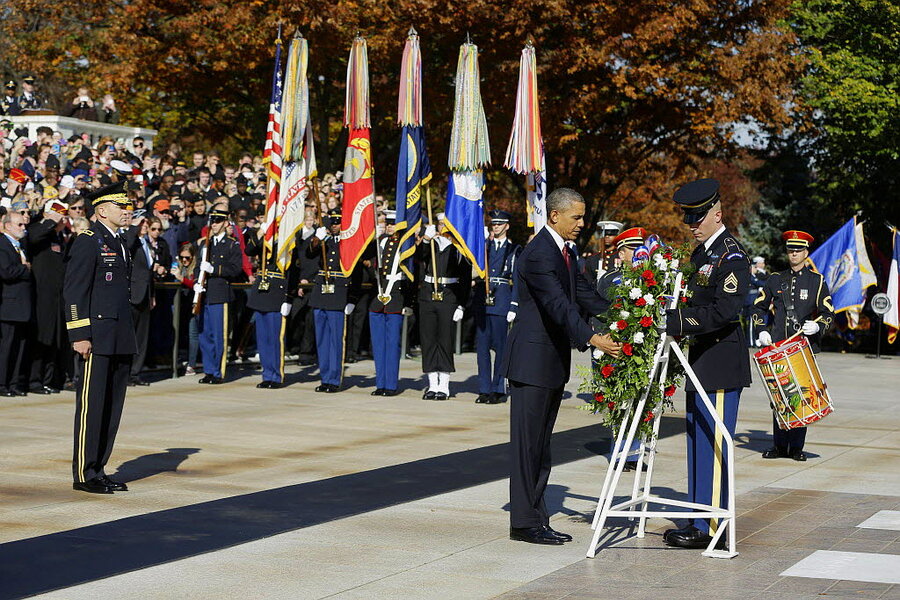How are Veterans Day and Memorial Day different?
Loading...
Why does the United States have a holiday named Veterans Day and one named Memorial Day? Don’t they overlap a bit, with both celebrating the US armed forces and military service?
These are questions that Decoder gets quite a bit, since we’ve done pioneering work on the origins of American holidays. (See our classic work on the myth that is “Presidents’ Day,” here.)
The quick answer to the Veterans Day question is that no, it honors a different, larger group of people than does Memorial Day. Veterans Day is about taking time to recognize all US service personnel from all wars. Memorial Day is a day set aside to honor those who gave the ultimate sacrifice and died in the service of their country.
The longer, background answer is that their origins are also very different.
Both grew organically out of other holidays that commemorated the end of wars. Veterans Day was originally Armistice Day and took place on the 11th day of the 11th month of 1918, which was when the armistice that ended World War I took effect. Memorial Day was originally Decoration Day, when survivors and loved ones decorated the graves of those who perished in the Civil War. It is in the spring because that is when flowers bloom and thus can be gathered and placed on resting sites in memoriam.
Since Monday is Veterans Day, we’ll go into its history in a bit more depth. Armistice Day was first celebrated in 1919 at the direction of President Wilson. The original idea was for a day observed with parades and public meetings and a time of silence at 11 a.m., the hour of day the armistice took effect, according to a Department of Veterans Affairs history of the holiday.
“To us in America, the reflections of Armistice Day will be filled with solemn pride in the heroism of those who died in the country’s service,” Wilson said at the time.
Congress in 1926 passed a concurrent resolution that set aside Nov. 11 as a commemoration of World War I’s end. At the time, lawmakers directed that the day should involve thanksgiving and prayer and “exercises designed to perpetuate peace through good will and mutual understanding between nations.”
In 1938, Congress passed another measure that made Armistice Day an official legal holiday. It was primarily for World War I veterans, and the cause of furthering world peace.
Then World War II intervened, followed by the conflict in Korea. Something more inclusive seemed appropriate. In 1954, Congress struck the word “Armistice” from its previous law and inserted in its place “Veterans.” President Dwight D. Eisenhower issued the first presidential Veterans Day proclamation, saying that the US was expanding the scope of the holiday and that it was now a time for all Americans to “solemnly remember the sacrifices of all those who fought so valiantly ... to preserve our heritage of freedom.”
Then the big shake-up of 1968 occurred. Congress passed another bill, this one the Uniform Monday Holiday Bill – legislation that aimed to shuffle certain US holidays around to create three-day weekends for increased leisure and business purposes.
Washington’s Birthday, Memorial Day, Columbus Day, and Veterans Day were the federal holidays picked to move to Mondays at the time. Veterans Day was moved to the fourth Monday in October. All but two states – Mississippi and South Dakota – voted to move state Veterans Day activities to the new date.
But many states weren’t happy about it. Veterans Day belonged in November, closer to the original source of the World War I Armistice Day, in this view.
By 1975, 25 states had voted to move their recognition of Veterans Day back to its original date, according to a US Army history of the holiday. Congress took note, and the same year Washington gave in and passed a law “to return the Federal observance of Veteran's Day to November 11, based on popular support throughout the nation.”
That took effect in 1978.








